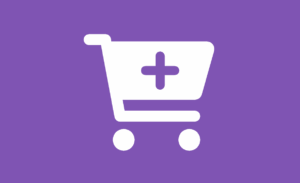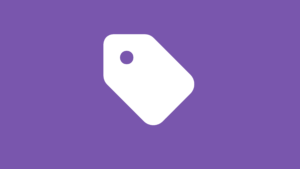Effortless Payments, More Conversions: PayPal Buttons with FAB Make It Simple
In the fast-paced world of e-commerce, every second counts – especially when it comes to making payments. A smooth, hassle-free payment experience can decide between a customer completes a purchase or abandons their cart. By integrating a trusted, seamless payment system like PayPal through the Floating Awesome Button (FAB) plugin, you can offer your customers the simplicity they crave while boosting your conversions.
FAB makes adding PayPal to your site effortless. With its user-friendly interface, you’re not just offering a payment method—you’re providing a seamless experience that drives trust, satisfaction, and sales. When payments are quick, easy, and secure, your customers are more likely to convert, leading to higher revenue and repeat business.
In this article, we’ll explore why easy payment options are essential for increasing conversions, how PayPal stands out as a payment solution, and how you can easily integrate PayPal buttons using FAB. We’ll also dive into the benefits of PayPal, compare it with other online payment methods, and provide a simple step-by-step guide to adding PayPal buttons to your WordPress site. Let’s get started!
Online Payments Unveiled: Why They Matter for Your Website
Offering smooth and secure online payment options is a game-changer for any business. Whether you’re selling products, offering services, or accepting donations, making payments easy and reliable is essential for building customer trust and driving conversions. Let’s dive into why online payments are a must for your website’s success.
Definition of Online Payment
Online payment allows customers to make purchases through various digital methods, including credit cards, bank transfers, and e-wallets, all from the comfort of their device—no need for physical interaction. Common examples of online payments include:
- E-commerce Stores: Websites like Amazon and eBay.
- Services: Platforms like Uber and Airbnb.
- Donations: Fundraising sites like GoFundMe and Kickstarter.
- Subscriptions: Services like Netflix or Spotify.
How Online Payments Work
Once a customer selects their items and proceeds to checkout, the payment gateway securely encrypts their details and sends the transaction request to the payment processor. If everything checks out, the payment is approved and funds are transferred, all within seconds.
Impact on Websites
Integrating online payments into your website provides several key benefits:
- Increased Conversion Rates: A streamlined checkout process encourages customers to complete their purchases, reducing cart abandonment.
- Global Reach: Accepting various payment methods allows your website to cater to customers worldwide, facilitating international transactions.
- Improved Trust & Credibility: By offering trusted payment methods like PayPal and credit cards, you increase customer confidence and encourage repeat business.
- Faster Transactions: Online payments ensure quick processing, reducing delays and offering a seamless user experience that keeps customers satisfied.
PayPal: The Trusted Payment Solution Your Website Needs
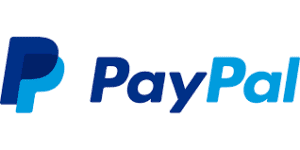
PayPal has established itself as one of the most trusted and widely used online payment platforms. Known for its security, ease of use, and global reach, PayPal makes it simple for businesses to accept payments from customers all over the world.
Let’s explore why PayPal is a must-have for your website.
Why PayPal is a Customer Favorite
PayPal is a go-to option for customers due to its ease of use, security, and widespread adoption. Customers can link their PayPal account to various payment methods, such as credit cards or bank accounts, and make payments without repeatedly entering their details. It’s a fast, secure, and convenient way for customers to complete transactions without worrying about sharing sensitive information.
The Advantages of Offering PayPal
- Global Reach: PayPal operates in over 200 markets and supports 25 currencies, allowing businesses to cater to a global audience.
- Security: PayPal offers buyer and seller protection, reducing the risk of fraud.
- Convenience: With PayPal, customers can check out faster without needing to manually input their payment details each time.
- Flexibility: PayPal allows customers to pay via credit cards, debit cards, and their PayPal balance, making it an accessible option for various users.
How PayPal Works
PayPal works as an intermediary between the customer and the merchant. Here’s how it works:
- Customer Checkout: The customer selects PayPal as their payment option at checkout.
- Payment Authorization: The customer is redirected to PayPal to authorize the payment using their PayPal account or linked payment methods.
- Payment Confirmation: After authorization, PayPal transfers the payment to the merchant’s PayPal account.
- Fund Transfer: The merchant can then withdraw funds from their PayPal account to their linked bank account or use it for future purchases.
Exploring Online Payments: Comparing PayPal with Other Options
When it comes to online payments, PayPal is just one of several popular solutions available. While it offers many benefits, it’s important to understand how PayPal compares to other payment options.
In this section, we’ll explore the key differences between PayPal and other major payment methods.
a. Credit and Debit Cards
- Overview: Credit and debit cards are the most common payment methods worldwide. They are directly linked to the customer’s bank account or credit line.
- Pros: Wide acceptance, quick and easy transactions, and secure payment processing.
- Cons: Customers need to input card details each time, and fraud risks can arise if not properly managed.
b. Stripe
- Overview: Stripe is a payment processor that allows businesses to accept payments online without requiring a merchant account. It supports various payment methods, including credit cards, Apple Pay, and Google Pay.
- Pros: Seamless integration with websites, customizable checkout, and support for international payments.
- Cons: Stripe doesn’t support PayPal, which could limit some users who prefer to pay via their PayPal accounts.
c. Bitcoin
- Overview: Bitcoin is a decentralized cryptocurrency that allows users to make peer-to-peer transactions without a third-party intermediary.
- Pros: Lower transaction fees, secure, and offers anonymity.
- Cons: Volatile exchange rates and less widespread acceptance than traditional payment methods.
d. Apple Pay
- Overview: Apple Pay is a mobile payment solution that enables customers to pay using their Apple devices, such as iPhones and Apple Watches.
- Pros: Fast, secure, and widely used by Apple device users.
- Cons: Limited to Apple users, and some websites may not support Apple Pay.
e. Google Pay
- Overview: Google Pay is a digital wallet that allows customers to make payments using their Android devices or linked Google accounts.
- Pros: Simple and secure transactions, fast checkout, and integration with Google services.
- Cons: Limited to Android users, and fewer global users compared to PayPal.
f. PayPal
- Overview: PayPal is one of the most widely used payment platforms, offering a secure, easy, and reliable payment method.
- Pros: Global reach, buyer and seller protection, and fast processing.
- Cons: Fees for certain transactions, and some customers may prefer other options depending on their location.
FAB: The Simple Solution to Boost Your Website’s Payment Experience

Integrating payment buttons, such as PayPal, into your website is key to providing a smooth user experience. However, to take your payment system to the next level, using the Floating Awesome Button (FAB) plugin can further enhance functionality and user engagement.
Let’s take a closer look at how FAB can simplify the payment process on your website.
What is the Floating Awesome Button (FAB) Plugin?
FAB is a WordPress plugin that FAB (Floating Awesome Button) is a WordPress plugin that allows you to add floating, customizable buttons to your website. The plugin includes an abundance of features that make it effortless for website owners to boost user engagement and enhance site functionality. Whether you’re adding floating action buttons, notifications, or integrating payment solutions like PayPal, FAB streamlines the process.
The PayPal Button feature is a highlight, enabling you to integrate PayPal payments with ease, allowing your customers to pay with just a click, and without requiring any technical know-how. These buttons remain visible as users scroll, making it easy for them to take action, such as completing a payment or contacting you, without having to search for the button on the page.
Key Features of FAB
- Floating Button for Visibility
FAB’s floating buttons stay visible as visitors browse your site, making it easy for them to take action, such as paying or contacting you, anytime. - Customizable Design
Easily customize the button’s color, icon, and position to match your website’s design and grab visitors’ attention. - Multi-Payment Gateway Integration
FAB supports multiple payment methods, allowing you to accept PayPal, Bitcoin, and other cryptocurrencies alongside traditional currencies. - User-Friendly Setup
No coding is required—simply install FAB, adjust a few settings, and start accepting payments within minutes. - Global Compatibility
FAB works seamlessly on all devices and browsers, enabling customers worldwide to make payments effortlessly.
Why FAB is Ideal for WordPress Websites
FAB offers features that are perfect for enhancing the user experience on your website, especially when integrating payment options like PayPal. Here are some key functionalities:
- Various Buttons: With FAB, you can create multiple buttons for different actions, such as a PayPal payment button, a contact button, or a social media share button.
- Popups: FAB allows you to create eye-catching popups that can capture attention, such as displaying a special offer or a payment confirmation message.
- Toasts: FAB also supports toast notifications, which are small pop-up messages that can appear at the corner of the screen to inform users about promotions, or other important information.
For example, you could create a floating PayPal button that remains visible as users scroll, a popup to offer a discount, and a toast notification to confirm payment, all using FAB’s easy-to-use features.
Why PayPal Buttons Are a Must-Have for Your Website
Adding a PayPal button to your website isn’t just a convenience—it’s a smart business move. In a world where customers expect fast, flexible, and secure payment options, offering PayPal can make all the difference in turning visitors into paying customers.
Here’s why PayPal buttons should be a key part of your site’s payment strategy:
- Instant Trust
PayPal is a globally recognized and trusted brand. When visitors see a PayPal button, it instantly adds credibility to your site and reassures them that their payment is secure. - Faster Checkout
PayPal’s quick login and one-click payment options reduce friction in the checkout process, helping you lower cart abandonment rates. - Mobile Optimization
PayPal buttons are optimized for mobile, giving smartphone shoppers a smooth and speedy checkout experience. - Broader Reach
By offering PayPal, you’re opening your store to millions of users worldwide who prefer or rely on PayPal for online payments. - Higher Conversions
Customers are more likely to complete their purchase when they see their preferred payment method available—especially one as familiar as PayPal.
Whether you’re selling digital downloads, physical products, or services, a PayPal button is a simple way to make your site more trustworthy, accessible, and profitable.
Adding PayPal Buttons with FAB: A Simple Step-by-Step Guide
Floating Awesome Button (Sticky Button, Popup, Toast) & +100 Website Custom Interactive Element
Integrating PayPal buttons into your website using the Floating Awesome Button (FAB) plugin is incredibly easy and doesn’t require any technical expertise. Follow this step-by-step guide to start accepting PayPal payments quickly and effectively.
Step 1: Install the FAB Plugin
- Go to your WordPress Dashboard.
- Navigate to Plugins > Add New.
- Search for “Floating Awesome Button.”
- Click Install, then Activate the plugin to enable the FAB functionality on your site.
Step 2: Create a New FAB Button
- In your dashboard, go to FAB → Add New FAB.
- From the list of available options, select “PayPal Button” to create your PayPal payment button.
Step 3: Connect Your PayPal Account
- Paste your PayPal email address or API credentials into the Link Address field in the FAB settings.
- In the Button Text field, write a compelling call-to-action, such as:
“Pay with PayPal” , “Complete Your Purchase with PayPal”, or “Buy Now with PayPal”.
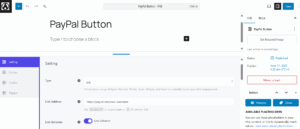
Step 4: Style and Position Your PayPal Button
- Choose a button color that contrasts with your website’s design but still grabs attention.
- Set the button position to bottom-right or bottom-left, depending on your site’s layout.
- Ensure the responsive display option is enabled so your PayPal button looks great on all devices—mobile, tablet, and desktop.
- If you want the PayPal button to be the only floating button, enable Standalone Mode.
- Set a hotkey if you want users to quickly trigger the button.
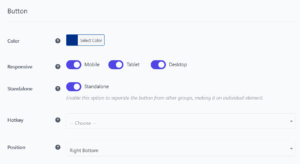
Step 5: Add a PayPal Icon
- Select an icon from the FAB icon library. You can choose a PayPal icon, a shopping cart icon, or any other design that fits your site’s theme.
- Pick an icon color that contrasts well with the button’s background to ensure it stands out clearly and is visible to users.
![]()
Step 6 (Optional): Add a Tooltip
- Enable Always Display to keep your button’s text visible at all times.
- Choose a font color that complements your brand and ensures the text is easy to read.
Step 7: Set Smart Display Rules
Maximize the impact of your PayPal button by using FAB Location Rules to show it only when and where it matters most:
- Time Rules: Display the PayPal button during peak shopping hours or for special promotions.
- Day Rules: Show the button on weekdays, weekends, or during product launches.
- Date Range: Use this feature for limited-time offers or seasonal campaigns.
- Post Type/Page: Show the PayPal button on product pages, checkout pages, or blog posts related to payment options.
- User Role or Condition: Display the button only to logged-in users, returning customers, or those with specific conditions, such as a purchase history.
Step 8: Save and Preview
- Once you’ve customized the button, click Save to apply your changes.
- Preview your site on both desktop and mobile to ensure the PayPal button looks sharp and functions as expected.
Now, your PayPal button is ready to go! With just a few simple steps, you’ve added an easy and secure payment option to your website, helping you increase conversions and enhance the user experience.
Reap the Rewards: Benefits of PayPal Buttons with FAB
Integrating PayPal buttons into your website with FAB brings numerous benefits for both customers and website owners. Here’s how adding PayPal buttons can make life easier for everyone and boost your business.
- Faster Checkout for Customers
For customers, PayPal means a quicker, more convenient checkout. They don’t need to enter their payment information every time, which makes purchasing feel faster and safer. This ease leads to more successful transactions and fewer abandoned carts. - Always Available for Easy Payments
With the PayPal button always visible as customers browse your site, they can pay anytime without searching for the button. This consistent visibility makes it easier for customers to take action and helps improve their overall shopping experience. - Reach More Customers Globally
From the website owner’s perspective, PayPal allows you to accept payments from customers around the world, in different currencies. This global reach opens your site to new markets, helping you grow your customer base and increase sales. - Builds Trust with Secure Payments
PayPal is a trusted payment option that customers recognize and feel secure using. By offering PayPal, you show your customers that their payments are safe, which builds trust and encourages them to buy more from you. - Simple for Website Owners
Setting up PayPal with FAB plugin is quick and easy—no complicated coding required. Once it’s set up, you don’t need to worry about managing transactions. For customers, the experience is smooth; for website owners, it’s efficient and hassle-free. - Fully Customizable to Match Your Needs
FAB gives you full control over the design and positioning of your PayPal button. Whether you want it to be a floating button that follows users as they scroll or a fixed button in a prominent location, you can make sure it fits seamlessly into your site’s design and user flow. Plus, you can control when and where the button appears, making it easy to target specific pages or actions.
Best Practices for PayPal Buttons: Boost Conversions with Strategic Placement
Now that you’ve added a PayPal button to your website, the next step is ensuring it is placed effectively to maximize conversions. Strategic button placement, combined with smart design choices, can make all the difference in improving customer experience and increasing sales.
- Keep It Visible at All Times
The PayPal button should be easily accessible as visitors browse your site. Consider placing it in the bottom-right or bottom-left corner, where it remains visible while users scroll. A floating button is ideal for keeping the payment option at their fingertips without obstructing content. - Place It on Key Pages
To make it easier for customers to take action, place the PayPal button on important pages, such as:
• Product Pages: Directly after product descriptions, so customers can quickly proceed to checkout.
• Checkout Pages: Display the PayPal button as a payment option to speed up the process for returning customers.
• Landing Pages: If you’re running a campaign or promotion, place the PayPal button on your landing pages to drive immediate action. - Use a Clear Call to Action
Make sure the text on the PayPal button is clear and action-oriented. Use phrases like “Pay Now,” “Complete Purchase,” or “Buy with PayPal” to prompt immediate action. The simpler and more direct, the better. - Match the Design to Your Website
The PayPal button should blend seamlessly with your website’s design but still stand out enough to grab attention. Customize the button color, icon, and style to match your brand’s aesthetic while ensuring it’s noticeable enough to encourage clicks. - Show It at Strategic Moments
Show the PayPal button during the most relevant times, such as after a user has added items to their cart or is ready to checkout. This helps create a smooth and seamless transition from browsing to purchasing.
By following these best practices, you can ensure that your PayPal button is always ready to help customers complete their purchases with ease, improving both user experience and conversion rates. Proper placement and design will maximize its effectiveness, driving more sales and enhancing customer satisfaction.
Conclusion: Make Your Website Work Harder with PayPal Buttons and FAB
Ready to turn your website into a more powerful, user-friendly platform that drives sales? Adding PayPal buttons with the Floating Awesome Button (FAB) plugin is an easy yet effective way to simplify payments, enhance customer trust, and increase conversions.
With PayPal, you’re providing your customers with a fast, secure way to pay, while FAB ensures that the button is always accessible and seamlessly integrated into your site’s design. Whether it’s a floating button, customizable colors, or smart display rules, FAB gives you the control to make PayPal work harder for your business.
By strategically placing and styling your PayPal button, you can create a smooth, frictionless experience that encourages purchases and keeps customers coming back for more.
Start integrating PayPal with FAB today, and take your website to the next level!





